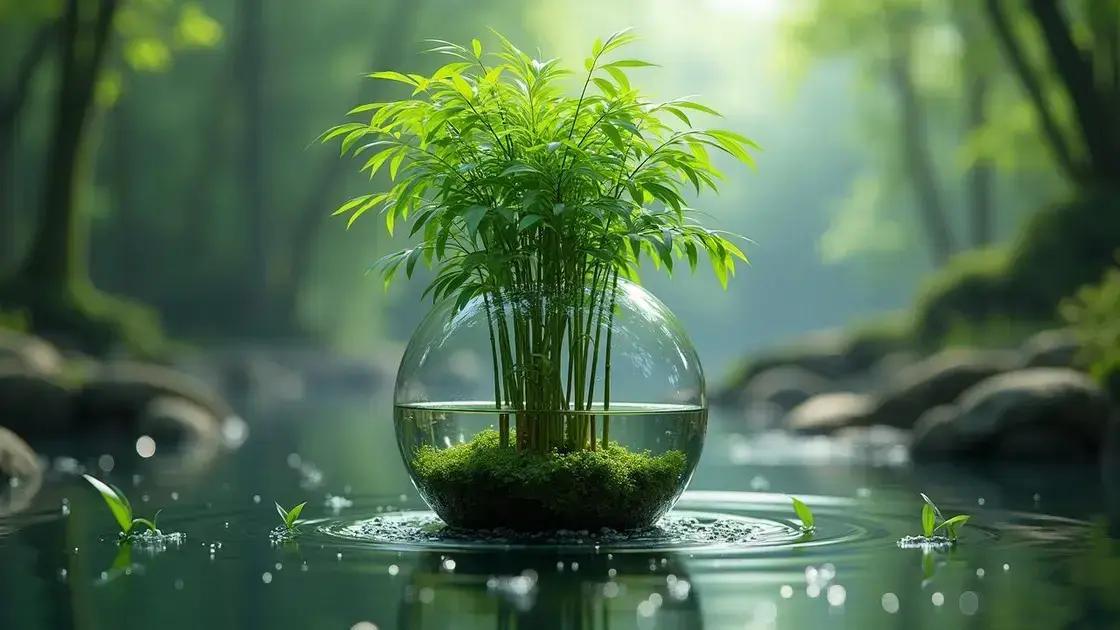How to Care for Bamboo Plant in Water: 7 Essential Tips for Success
How to care for bamboo plant in water is a question many plant enthusiasts ask as they seek to nurture this beautiful greenery. Understanding the unique needs of bamboo can make all the difference in ensuring it flourishes. Let’s dive into the essential tips for maintaining vibrant bamboo plants, from the right watering routine to pest management techniques.
Table of Contents
ToggleUnderstanding the best watering schedule for bamboo
Understanding the best watering schedule for bamboo is crucial for maintaining the health and beauty of your bamboo plant in water. Proper watering practices ensure that the plant receives the nutrients and hydration it needs to thrive. Here are some essential aspects to consider:
Optimal Watering Frequency
- Check the water level every week.
- If the water level drops significantly, refill it to ensure the roots remain submerged.
- Change the water every two weeks to keep it fresh and minimize algae growth.
Signs of Underwatering or Overwatering
Regularly observe your bamboo for signs of distress:
- Underwatering: Yellowing leaves and wilting stems may indicate that your bamboo needs more water.
- Overwatering: Root rot, which causes browning of the stems and leaves, can result from excess water.
Water Quality Considerations
Equally important is the quality of water used:
- Use distilled or rainwater whenever possible.
- Avoid using tap water with high levels of chlorine or fluoride, as these can harm the plant.
- If using tap water, let it sit for 24 hours before use to allow chlorine to dissipate.
Creating a Watering Schedule
To put your new knowledge into practice, consider setting up a simple watering schedule:
| Week | Action |
|---|---|
| 1 | Check water levels and replace if needed. |
| 2 | Change the water completely. |
| 3 | Inspect for signs of distress. |
| 4 | Repeat water change and observation. |
By following these steps, you’ll be equipped to maintain an effective watering schedule for your bamboo plants. For more insights on keeping indoor plants healthy, consider exploring indoor gardening techniques.
Ideal sunlight exposure for bamboo plants in water

Ideal sunlight exposure for bamboo plants in water greatly affects their growth and overall health. Proper light conditions can enhance the vibrant colors of your bamboo and ensure sustained vitality. Here’s a closer look at how to optimize sunlight for your bamboo plants.
Understanding Sunlight Needs
- Bamboo thrives best in bright, indirect sunlight.
- Direct sunlight can scorch the leaves, especially in warmer climates.
- Low light conditions can lead to slow growth and spindly stems.
Best Locations for Sunlight Exposure
Here are some ideal locations to consider:
- Near Windows: Place your bamboo near a north or east-facing window for the best indirect light.
- In a Sunny Room: Make sure that the room has sufficient bright, filtered light from a nearby source.
- Using Sheers: If placing the bamboo in a south-facing window, consider using sheer curtains to diffuse direct sunlight.
Signs of Proper Sunlight Exposure
To ensure your bamboo is receiving the right amount of light, watch for these signs:
- Vibrant green leaves indicate healthy growth.
- Sturdy, upright stems suggest your bamboo is well-positioned.
- If leaves turn yellow or brown, adjust its location to avoid excessive direct sunlight.
Creating a Sunlight Schedule
To maintain optimal lighting conditions, consider developing a schedule:
| Time of Day | Light Intensity |
|---|---|
| Morning | Gentle, diffused light, ideal for growth. |
| Noon | Bright light; monitor for overheating. |
| Afternoon | Direct sunlight; consider moving plant away. |
By effectively managing sunlight exposure, you can greatly enhance the vitality of your bamboo plant in water. For further tips on achieving a flourishing indoor garden, explore exploring indoor gardening techniques.
Effective pest control and maintenance practices
Effective pest control and maintenance practices are essential for keeping your bamboo plants healthy when grown in water. Pests can quickly undermine the growth and beauty of your plants, making a proactive approach to prevention and maintenance critical. Here’s an effective plan to safeguard your bamboo.
Identifying Common Pests
- Spider mites: Small, spider-like insects that cause discoloration.
- Aphids: Tiny green or black insects that suck plant sap.
- Mealybugs: White, cottony insects that infest stems and leaves.
Preventive Measures for Pest Control
Taking preventive steps can significantly reduce the risk of infestations:
- Regular inspections: Check your bamboo weekly for any signs of pests.
- Maintain cleanliness: Keep the water and plant area clean to discourage pests.
- Air circulation: Ensure good air flow around plants by spacing them properly.
Effective Treatment Options
If you discover pests on your bamboo, consider these effective treatment methods:
- Neem oil: A natural pesticide that disrupts the life cycle of pests.
- Insect soap: Helps eliminate soft-bodied insects without harming the plant.
- Sticky traps: Catch flying insects to prevent them from reaching your plants.
Maintaining a Healthy Environment
Along with pest control, proper maintenance is key:
| Maintenance Task | Frequency |
|---|---|
| Change water | Every 2 weeks |
| Clean leaves | Monthly |
| Inspect for pests | Weekly |
By implementing these effective pest control and maintenance practices, you can ensure that your bamboo thrives in its water environment. For more insights into keeping your indoor plants healthy, check out exploring indoor gardening techniques.
In conclusion
Caring for bamboo plants in water requires attention to their unique needs, including appropriate watering schedules, ideal sunlight exposure, and effective pest control practices. By following the tips outlined in this guide, you can create a thriving environment for your bamboo that promotes healthy growth and beauty. For additional insights, check out tips on enhancing your indoor garden.

